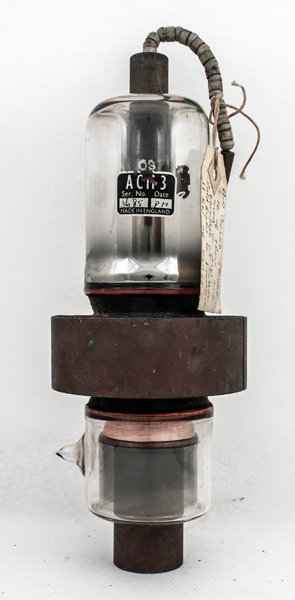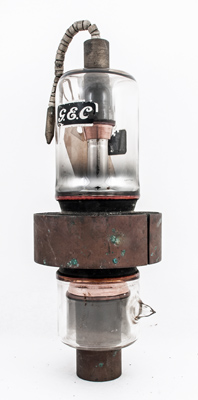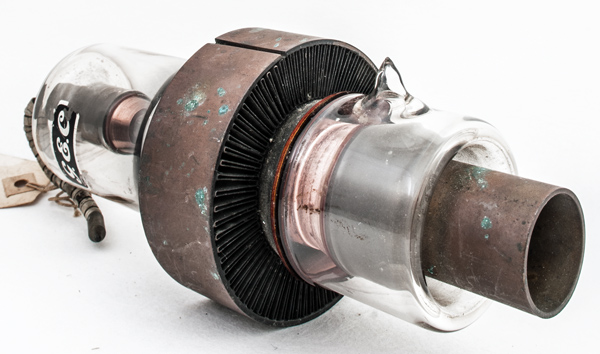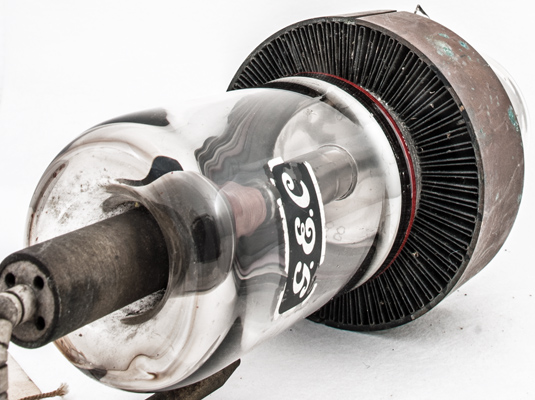|
ACM3Sensibly equivalent¶ to:BR1167See also:
|
|
|

|
The ACM3 was employed in the video modulator stages of the old high power Band I TV transmitters. The ACM stands for Air Cooled Modulator or AC filament Modulator Triode. Construction is as concentric cylinders.For its type it had a high mutual conductance. The anode ran at a few kV and the anode dissipation was of the order of 1,500 Watts, suggesting significant cooling effort would be required of the mounting arrangements.Their characteristics made them very suitable as video modulators.Richard writes: I was posted to Sutton Coldfield in 1964 and the main 405 line transmitter there was the only one of the larger TV transmitters still in use to use high level modulation. This required the generation of 11 kW of full resolution video!. To achieve this they used sixteen of these specially designed valves in a series parallel cathode follower arrangement. Although in service for many years the transmitter was regarded as rather experimental, as Ray Cooper explains: the RF stages were built by MetroVick and the Modulator by EMI. The handbooks for the RF and Modulator sections were quite distinct, bearing the logos of their respective manufacturers. (The Band II transmitters at Sutton Coldfield were built by ST&C).
The GEC logo. The heater connection is the flying lead, the heater/cathode connects to the top cylinder. The grid connects to the lower cylinder and the anode is the central ring.
The anode ring to outer ring is filled with folded metal tape to form a high performance radiator in the same way as is used to the present day. The grid connection seal is at the inside of the re-entrant glass tube that features the evacuation pip. These would be pumped to a very high vacuum without the use of getters as the high voltages involved necessitated clean internal glass.
The cathode end. Again the glass tube is made re-entrant. This reduces length and increases strength as well as giving a wider tube - therefore cooler envelope temperatures.Thanks to Richard Stibbons for donating this exhibit and giving operating details at Sutton Coldfield.The wide glass tube envelope is 83 mm in diameter and, including the base connections, is 229 mm tall.Reference: Data-sheet & Ray Cooper. Type ACM3 was first introduced in 1954. See also 1954 adverts. |
Absolute Maximum Operating Conditions¶
| Vh | Ah | Va | Vg | mAa | gm | μ | Pdiss | 
| 6.0 | 17.0 | 2,000 | - | 2,000 | 27 | 14 | 2,000W |
|
Updated April 28, 2018.
|
|